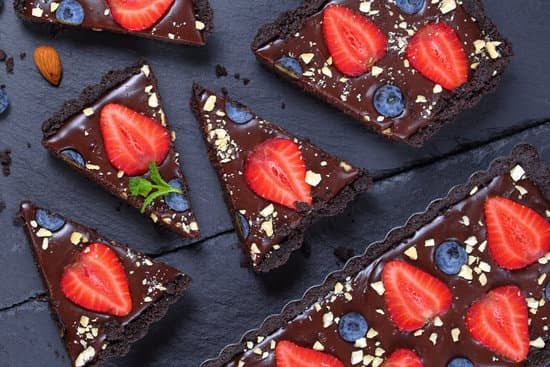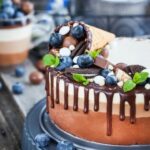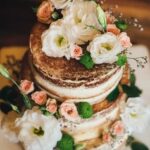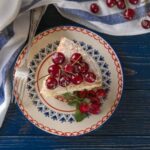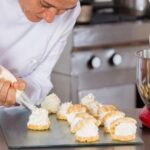Are you looking to elevate your cake decorating skills? Learn how to decorate a cake with buttercream in the most beautiful and delicious way possible. Buttercream is an incredibly versatile and popular frosting that can be used to create stunning designs for any occasion. From simple swirls to intricate piping, mastering buttercream decorating techniques can take your cakes from ordinary to extraordinary.
Buttercream cake decorating allows for endless creativity and possibilities. Whether you’re a beginner or experienced baker, this article will guide you through the essential tools and ingredients needed for buttercream cake decorating, as well as the preparation of your cake for decorating – including leveling and crumb coating. You’ll also learn how to master basic buttercream decorating techniques such as piping, smoothing, and creating texture to achieve professional-looking results.
Furthermore, this article will delve into color theories and mixing, helping you achieve the perfect buttercream shades for your designs. You’ll also find design inspiration and ideas ranging from simple to intricate buttercream cake designs that are sure to impress. Additionally, common troubleshooting issues when it comes to buttercream decorating will be addressed, ensuring that your final product is flawless. So get ready to add those final touches and present your masterpiece in style.
Essential Tools and Ingredients for Buttercream Cake Decorating
When it comes to decorating a cake with buttercream, having the right tools and ingredients is crucial for achieving professional-looking results. Here are some essential items that you will need to have on hand before starting your buttercream cake decorating project:
- Spatula: A straight spatula and an offset spatula are both important for spreading and smoothing the buttercream onto your cake.
- Piping tips and bags: Different piping tips create different designs, so having a variety of tips on hand will allow you to create a range of decorative elements.
- Turntable: A turntable makes it easier to smoothly apply the buttercream to the sides of your cake while keeping everything even and level.
- Bench scraper: This tool is essential for achieving straight sides and a smooth finish when decorating your cake with buttercream.
- Buttercream ingredients: Of course, you’ll need the main ingredients for making buttercream, such as butter, powdered sugar, vanilla extract, and heavy cream.
In addition to these basic items, there are also specialized tools available for more advanced techniques in buttercream cake decorating. However, with just these essentials, you can already start practicing how to decorate a cake with buttercream like a pro.
As you gather your tools and ingredients, remember that practice makes perfect when it comes to mastering the art of buttercream cake decorating. With patience and dedication, you’ll soon be creating stunning designs on all of your cakes.
Preparing Your Cake for Buttercream Decorating
When preparing a cake for buttercream decorating, it is crucial to start with a level surface and a smooth finish. This ensures that your buttercream decorations will adhere evenly and flawlessly. In this section, we will walk through the process of leveling your cake layers and achieving the perfect crumb coat.
Leveling Your Cake Layers
Before you can begin decorating your cake with buttercream, it is essential to ensure that your cake layers are level. Uneven layers can result in a lopsided or unstable finished product. To level your cake layers, use a long serrated knife or a cake leveler to carefully trim off any domed tops and create an even surface.
Applying the Crumb Coat
Once your cake layers are leveled, it’s time to apply a crumb coat. A crumb coat is a thin layer of buttercream that seals in any loose crumbs on the surface of the cake.
To apply the crumb coat, place a generous amount of buttercream on top of the cake and use an offset spatula to spread it evenly over the top and sides. The goal is not to create a smooth finish at this stage, but rather to lock in any stray crumbs before adding additional layers of buttercream.
By following these steps for leveling your cake layers and applying a crumb coat, you will set yourself up for success as you move on to mastering basic buttercream decorating techniques such as piping, smoothing, and creating texture.
Mastering Basic Buttercream Decorating Techniques
To successfully master basic buttercream decorating techniques, you will need the following essential tools and ingredients:
- Piping bags and tips: A variety of piping tips in different shapes and sizes will allow you to create various designs and patterns.
- Offset spatula: This tool is essential for smoothing buttercream onto the cake’s surface and achieving clean, even finishes.
- Buttercream icing: Using a high-quality buttercream icing that holds its shape well is crucial for successful piping and smoothing.
- Turntable: A revolving cake stand or turntable will make it easier to pipe and smooth the buttercream evenly around the entire cake.
Once you have gathered your tools and ingredients, it’s time to start practicing the art of piping buttercream onto a cake. Start by experimenting with different piping tips and practicing basic designs such as rosettes, swirls, and borders.
The key to successful piping is maintaining consistent pressure on the piping bag while controlling the movement of your hand. Additionally, learning how to smoothly spread buttercream over the cake’s surface using an offset spatula is crucial for achieving a flawless finish.
Creating texture with buttercream opens up endless possibilities for adding visual interest to your cake designs. Experiment with different techniques such as ruffles, petals, or basketweave patterns to elevate your decorating skills. By mastering these basic techniques, you will be well on your way to creating stunning buttercream masterpieces that will impress any audience.
Whether you’re decorating a simple birthday cake or an elaborate wedding cake, mastering basic buttercream decorating techniques is essential for creating visually appealing designs that taste as good as they look. With patience, practice, and attention to detail, anyone can learn how to decorate a cake with buttercream like a professional pastry chef.
Color Theories and Mixing
When it comes to buttercream cake decorating, achieving the perfect shades of buttercream is essential for creating stunning designs. Understanding color theories and how to mix different shades will elevate your cake decorating game to the next level. Whether you want pastel hues for a whimsical design or vibrant colors for a bold statement, mastering the art of mixing buttercream shades is crucial.
To start, familiarize yourself with the color wheel and how different colors interact with each other. This will give you a better understanding of which colors can be mixed to create new shades and which ones may result in an undesired outcome.
For example, mixing blue and yellow buttercream will give you green, while mixing red and white will give you pink. Experimenting with small batches of buttercream will help you understand how different ratios of colors can affect the final shade.
When mixing large quantities of buttercream for a cake, it’s important to keep track of the proportions of each color used. This will ensure that you can replicate the same shade if necessary. Additionally, using gel-based food coloring instead of liquid food coloring can help achieve more vibrant and intense colors without compromising the consistency of the buttercream.
Overall, mastering the art of achieving perfect buttercream shades through color theory and mixing will open up endless possibilities for your cake decorating endeavors. With a solid understanding of how different colors interact and experimenting with various combinations, you’ll be able to bring your creative visions to life on your cakes.
| Color Mixing Tips | Benefits |
|---|---|
| Familiarize yourself with the color wheel | Understanding how colors interact |
| Use gel-based food coloring | Achieve vibrant colors without compromising consistency |
| Keep track of proportions when mixing large quantities | Ability to replicate the same shade if needed |
By keeping these tips in mind, achieving the perfect buttercream shades for your cake designs will become second nature as you continue to hone your skills in buttercream cake decorating.
Design Inspiration and Ideas
Simple Buttercream Designs
When it comes to decorating a cake with buttercream, simplicity can sometimes be the most elegant choice. A single color palette with a smooth, flawless finish can create a stunning and sophisticated look. Consider using simple piping techniques like rosettes, swirls, or dots to add a touch of texture and dimension to your design. Additionally, incorporating fresh flowers or edible glitter can elevate the overall appearance of your buttercream cake without adding complexity.
Intricate Buttercream Designs
For those looking to challenge their skills and create show-stopping masterpieces, intricate buttercream designs offer limitless possibilities. Techniques such as buttercream ruffles, ombre shading, or floral piping require precision and patience but result in visually stunning cakes. You can also experiment with layering different textures and patterns to add depth and visual interest to your design. Remember that practice makes perfect when it comes to mastering complex buttercream decorating techniques.
Personalized Buttercream Designs
One of the most rewarding aspects of buttercream cake decorating is the ability to customize designs to suit any occasion or recipient. Whether you’re creating a birthday cake for a loved one or a themed cake for a special event, personalized buttercream designs allow you to showcase your creativity and attention to detail.
Consider incorporating elements that reflect the recipient’s interests or hobbies, such as sports themes, favorite colors, or beloved characters. Personalized buttercream cakes are not only visually impressive but also hold sentimental value for those who receive them.
By exploring both simple and intricate buttercream designs while infusing personal touches into your creations, you can truly unleash your creativity and elevate your cake decorating skills. Keep in mind that regardless of the complexity of the design, mastering basic techniques is essential for achieving professional-looking results.
Troubleshooting Common Buttercream Decorating Issues
Decorating a cake with buttercream can be a fun and creative process, but it’s not without its challenges. From bulging layers to air bubbles in your frosting, there are a few common issues that can arise when working with buttercream. But fear not, as there are simple solutions to these problems that will help you achieve a smooth and professional-looking finish on your cake.
One of the most common issues when decorating with buttercream is the appearance of air bubbles in the frosting. This can create an uneven and bumpy surface on your cake, which is not ideal for a clean and polished look.
To avoid this problem, make sure to properly mix your buttercream and use a spatula to smooth out any air pockets as you apply the frosting. You can also try tapping the cake lightly on the countertop to release any trapped air bubbles.
Another issue that often arises when working with buttercream is bulging layers between cake tiers. This occurs when the filling or frosting between layers is too soft or moist, causing it to push out from between the cakes. To prevent this from happening, make sure your cake layers are properly leveled and filled, and chill the assembled cake before applying a final coat of buttercream. This will help stabilize the layers and minimize any bulging.
Lastly, if you find that your buttercream is too runny or too stiff for decorating, you may need to adjust the consistency by adding more powdered sugar for stiffness or cream for thinning. It’s important to achieve the right balance of firmness and spreadability in your buttercream to ensure smooth piping and spreading on your cake. By troubleshooting these common buttercream decorating issues, you’ll be able to create stunning cakes with flawless finishes every time.
Final Touches and Presentation
Adding embellishments and presenting your buttercream cake masterpiece is the final step in creating a stunning and delicious dessert. There are endless possibilities for adding decorative elements to your cake, from fresh flowers to edible glitter, and everything in between. Here are some ideas for adding those final touches that will really make your cake stand out.
One popular way to add embellishments to a buttercream cake is by using chocolate or candy molds to create intricate designs. These can be used to adorn the sides of the cake or as a cake topper. You can also use edible paints or food coloring pens to add intricate designs directly onto the buttercream surface.
When it comes to presenting your masterpiece, choosing the right cake stand or platter can make all the difference. Consider the overall theme of your cake and choose a stand or platter that complements it. For example, for a rustic-style buttercream cake, a wooden cake stand would be an ideal choice, while a glass pedestal stand may be better suited for a more elegant design.
Another important aspect of presenting your buttercream cake is ensuring that it is stored and displayed properly. If your cake needs to be refrigerated, allow it come to room temperature before serving to ensure the best texture and flavor.
| Embellishment Ideas | Presentation Tips |
|---|---|
| Use chocolate or candy molds for intricate designs | Choose a complementary cake stand or platter |
| Add edible paints or food coloring pens for personalized designs | Allow refrigerated cakes to come to room temperature before serving |
Conclusion
In conclusion, mastering the art of buttercream cake decorating can truly elevate your baking skills and impress your friends and family with beautiful and delicious creations.
Through this article, we have explored the essential tools and ingredients needed for buttercream cake decorating, as well as the step-by-step process of preparing a cake for decorating, mastering basic techniques such as piping and smoothing, understanding color theories for achieving perfect shades, finding design inspiration, troubleshooting common issues, and adding final touches to your masterpiece.
With the knowledge gained from this comprehensive guide, you now have all the necessary information to create stunning buttercream-decorated cakes that will be the centerpiece of any special occasion. Whether you choose to go for a simple or intricate design, the key is to practice and experiment with different techniques while also allowing your creativity to shine through.
Remember that practice makes perfect when it comes to perfecting your buttercream cake decorating skills. Don’t be afraid to try new designs or techniques, as each attempt will bring you one step closer to becoming a confident and skilled decorator. So why not gather your tools and ingredients today and start creating your own buttercream masterpieces? With perseverance and patience, you will soon find yourself mastering the art of how to decorate a cake with buttercream.
Frequently Asked Questions
How Do You Cover a Cake With Buttercream for Beginners?
Covering a cake with buttercream for beginners requires a few key steps. First, it’s important to crumb coat the cake to lock in any loose crumbs. Then, apply a thicker layer of buttercream and use a frosting smoother to create a smooth finish.
How Do You Ice a Cake With Buttercream for Beginners?
Icing a cake with buttercream as a beginner involves starting with a crumb coat, then using an offset spatula to apply the buttercream in an even layer around the cake. After that, use the spatula or a bench scraper to smooth out the buttercream for a clean finish.
Which Buttercream Is Best for Covering a Cake?
The best type of buttercream for covering a cake is Swiss meringue buttercream. It has a smooth and silky texture, making it easier to work with when frosting and smoothing out on the cake. Its stability also allows for intricate designs without losing shape or structure.

Welcome to our cake decorating blog! My name is Destiny Flores, and I am the proud owner of a cake decorating business named Cake Karma. Our mission is to provide delicious, beautiful cakes for all occasions. We specialize in creating custom cakes that are tailored specifically to each customer’s individual needs and tastes.

